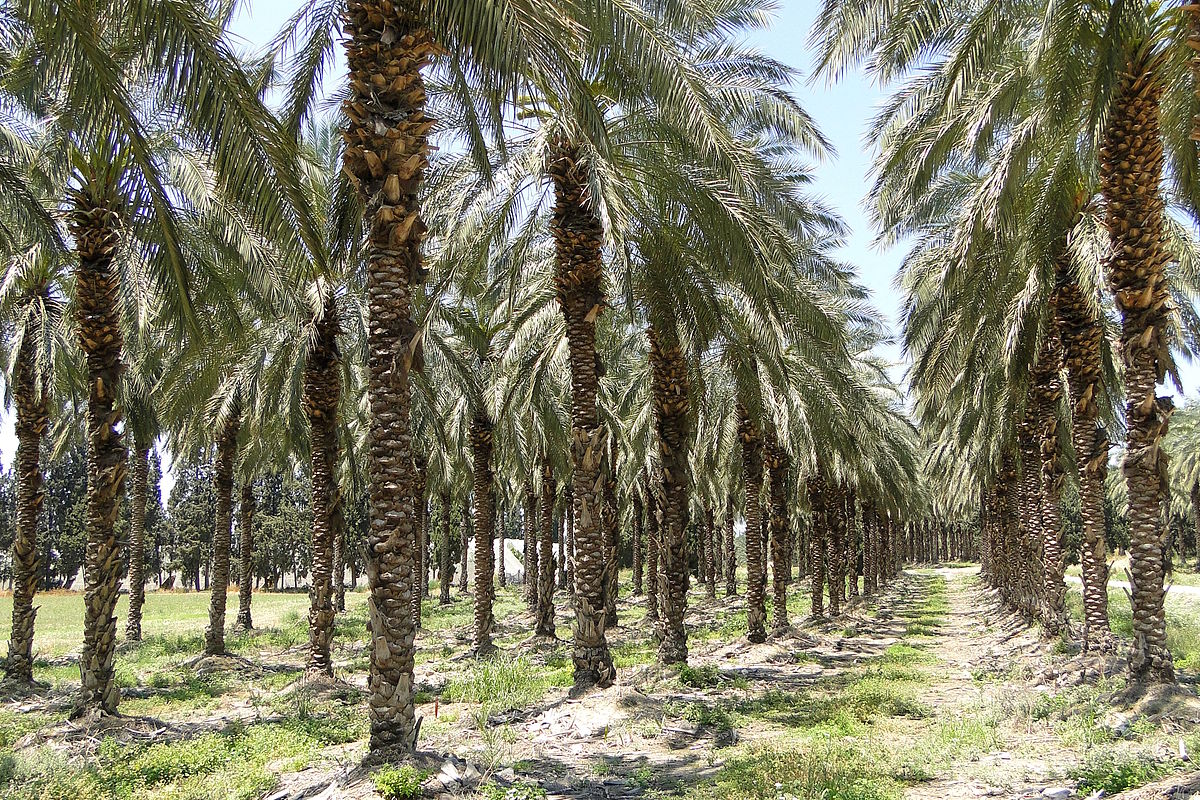5fish
Well-Known Member
- Joined
- Jul 28, 2019
- Messages
- 11,221
- Reaction score
- 4,687
Laitfundiums, Haciendas, and Southern Plantations are large estates or ranches and are powered by slaves or peonage systems. The Latifunidiums were large Roman estates, Haciendas were Latin American large estates and South Plantation was from the Southern United States. I argue these three systems for creating wealth from agriculture show slavery is profitable. In our man's history, three similar large estate systems developed all using the same formula for profitability... Stolen labor...
 en.wikipedia.org
en.wikipedia.org
A latifundium (Latin: latus, "spacious" and fundus, "farm, estate")[1] is a very extensive parcel of privately owned land. The latifundia of Roman history were great landed estates specializing in agriculture destined for export: grain, olive oil, or wine. They were characteristic of Magna Graecia and Sicily, Egypt, Northwest Africa and Hispania Baetica. The latifundia were the closest approximation to industrialized agriculture in Antiquity, and their economics depended upon slavery.
During the modern colonial period, the European monarchies often rewarded services with extensive land grants in their empires. The forced recruitment of local labourers allowed by colonial law made these land grants particularly lucrative for their owners. These grants, fazendas (in Portuguese) or haciendas (in Spanish), were also borrowed as loanwords, Portuguese latifúndios and Spanish latifundios or simply fundos.

 en.wikipedia.org
en.wikipedia.org
A hacienda (UK: /ˌhæsiˈɛndə/ or US: /ˌhɑːsiˈɛndə/; Spanish: [aˈθjenda] or [aˈsjenda]) is an estate (or finca), similar to a Roman latifundium, in Spain and the former Spanish Empire. With origins in Andalusia, haciendas were variously plantations (perhaps including animals or orchards), mines or factories, with many haciendas combining these activities. The word is derived from Spanish hacer (to make, from Latin facere) and haciendo (making), referring to productive business enterprises.
The term hacienda is imprecise, but usually refers to landed estates of significant size, while smaller holdings were termed estancias or ranchos. All colonial haciendas were owned almost exclusively by Spaniards and criollos, or rarely by mestizo individuals.[1] In Mexico, as of 1910, there were 8,245 haciendas in the country. In Argentina, the term estancia is used for large estates that in Mexico would be termed haciendas. In recent decades, the term has been used in the United States for an architectural style associated with the traditional estate manor houses.
The hacienda system of Argentina, Bolivia, Chile, Colombia, Guatemala, El Salvador, Mexico, New Granada, and Peru was an economic system of large land holdings. A similar system existed on a smaller scale in Puerto Rico and other territories. In Puerto Rico, haciendas were larger than estancias; ordinarily grew sugar cane, coffee, or cotton; and exported their crops abroad.

 en.wikipedia.org
en.wikipedia.org
A plantation is an agricultural estate, generally centered on a plantation house, meant for farming that specializes in cash crops, usually mainly planted with a single crop, with perhaps ancillary areas for vegetables for eating and so on. The crops that are grown include cotton, cannabis, coffee, tea, cocoa, sugar cane, opium, sisal, oil seeds, oil palms, fruits, rubber trees and forest trees. Protectionist policies and natural comparative advantage have sometimes contributed to determining where plantations are located.
In modern use, the term usually refers only to large-scale estates. Nevertheless, before about 1800, it was the usual term for a farm of any size in the southern parts of British North America, with, as Noah Webster noted, "farm" becoming the usual term from about Maryland northward. It was used in most British colonies but very rarely in the United Kingdom itself in this sense. There, as also in America, it was used mainly for tree plantations, areas artificially planted with trees, whether purely for commercial forestry, or partly for ornamental effect in gardens and parks, when it might also cover plantings of garden shrubs.[1]
Among the earliest examples of plantations were the latifundia of the Roman Empire, which produced large quantities of grain, wine, and olive oil for export. Plantation agriculture proliferated with the increase in international trade and the development of a worldwide economy that followed the expansion of European colonialism.
Latifundium - Wikipedia
 en.wikipedia.org
en.wikipedia.org
A latifundium (Latin: latus, "spacious" and fundus, "farm, estate")[1] is a very extensive parcel of privately owned land. The latifundia of Roman history were great landed estates specializing in agriculture destined for export: grain, olive oil, or wine. They were characteristic of Magna Graecia and Sicily, Egypt, Northwest Africa and Hispania Baetica. The latifundia were the closest approximation to industrialized agriculture in Antiquity, and their economics depended upon slavery.
During the modern colonial period, the European monarchies often rewarded services with extensive land grants in their empires. The forced recruitment of local labourers allowed by colonial law made these land grants particularly lucrative for their owners. These grants, fazendas (in Portuguese) or haciendas (in Spanish), were also borrowed as loanwords, Portuguese latifúndios and Spanish latifundios or simply fundos.

Hacienda - Wikipedia
 en.wikipedia.org
en.wikipedia.org
A hacienda (UK: /ˌhæsiˈɛndə/ or US: /ˌhɑːsiˈɛndə/; Spanish: [aˈθjenda] or [aˈsjenda]) is an estate (or finca), similar to a Roman latifundium, in Spain and the former Spanish Empire. With origins in Andalusia, haciendas were variously plantations (perhaps including animals or orchards), mines or factories, with many haciendas combining these activities. The word is derived from Spanish hacer (to make, from Latin facere) and haciendo (making), referring to productive business enterprises.
The term hacienda is imprecise, but usually refers to landed estates of significant size, while smaller holdings were termed estancias or ranchos. All colonial haciendas were owned almost exclusively by Spaniards and criollos, or rarely by mestizo individuals.[1] In Mexico, as of 1910, there were 8,245 haciendas in the country. In Argentina, the term estancia is used for large estates that in Mexico would be termed haciendas. In recent decades, the term has been used in the United States for an architectural style associated with the traditional estate manor houses.
The hacienda system of Argentina, Bolivia, Chile, Colombia, Guatemala, El Salvador, Mexico, New Granada, and Peru was an economic system of large land holdings. A similar system existed on a smaller scale in Puerto Rico and other territories. In Puerto Rico, haciendas were larger than estancias; ordinarily grew sugar cane, coffee, or cotton; and exported their crops abroad.

Plantation - Wikipedia
 en.wikipedia.org
en.wikipedia.org
A plantation is an agricultural estate, generally centered on a plantation house, meant for farming that specializes in cash crops, usually mainly planted with a single crop, with perhaps ancillary areas for vegetables for eating and so on. The crops that are grown include cotton, cannabis, coffee, tea, cocoa, sugar cane, opium, sisal, oil seeds, oil palms, fruits, rubber trees and forest trees. Protectionist policies and natural comparative advantage have sometimes contributed to determining where plantations are located.
In modern use, the term usually refers only to large-scale estates. Nevertheless, before about 1800, it was the usual term for a farm of any size in the southern parts of British North America, with, as Noah Webster noted, "farm" becoming the usual term from about Maryland northward. It was used in most British colonies but very rarely in the United Kingdom itself in this sense. There, as also in America, it was used mainly for tree plantations, areas artificially planted with trees, whether purely for commercial forestry, or partly for ornamental effect in gardens and parks, when it might also cover plantings of garden shrubs.[1]
Among the earliest examples of plantations were the latifundia of the Roman Empire, which produced large quantities of grain, wine, and olive oil for export. Plantation agriculture proliferated with the increase in international trade and the development of a worldwide economy that followed the expansion of European colonialism.




